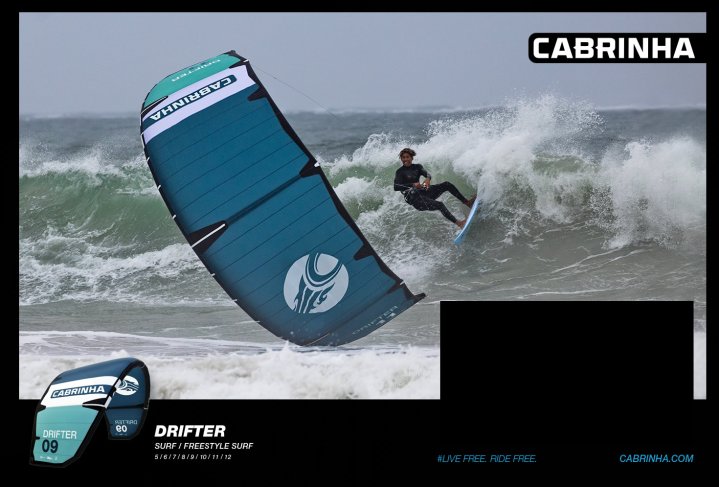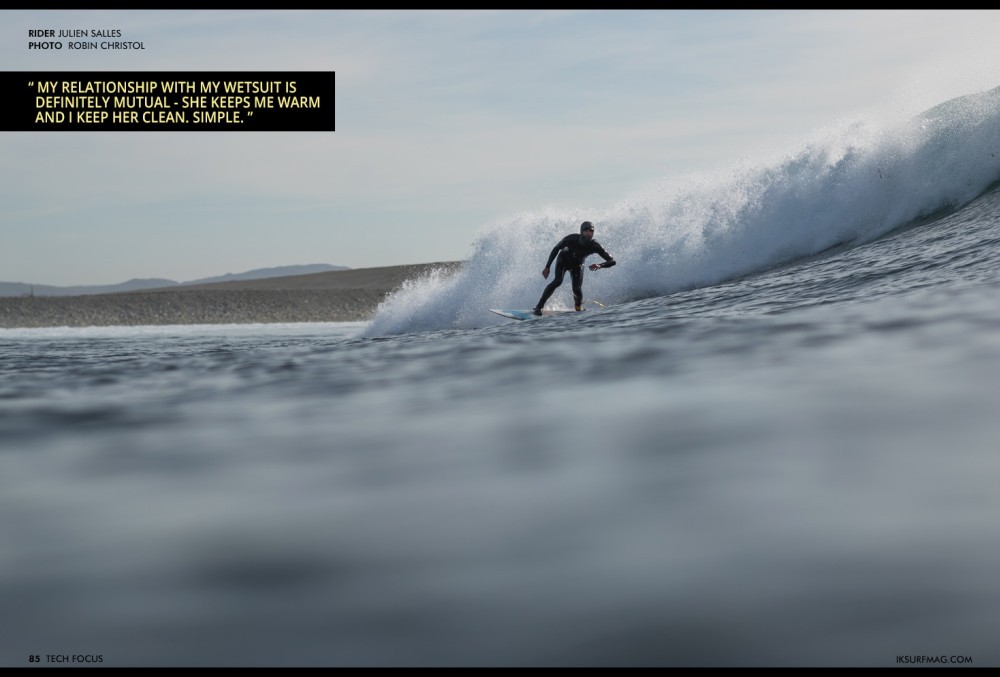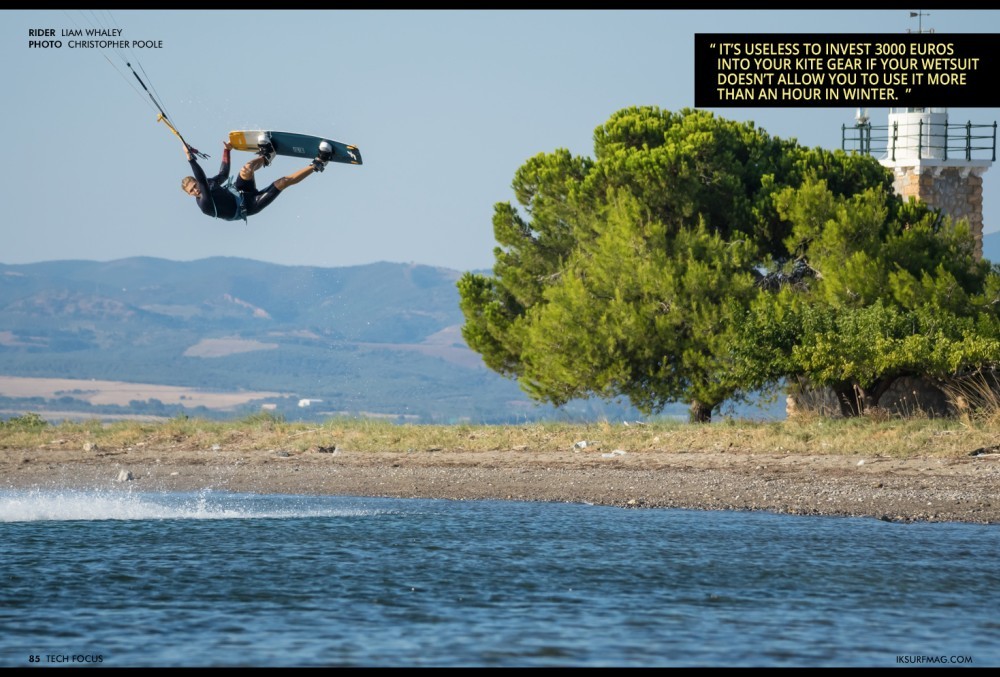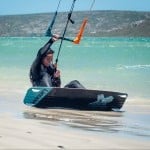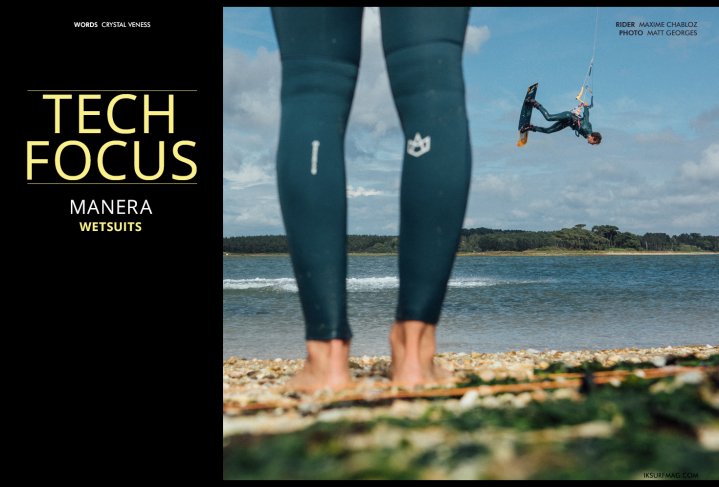
Tech Focus - Manera Wetsuits
Issue 85 / Thu 4th Feb, 2021
Often overlooked, your wetsuit is one of the most important pieces in your kiteboarding quiver! The MANERA's pro team and Brand Manager Julien Salles take us for a deep dive into neoprene technology in this interview!
The MANERA team is packed with talent and a line-up of riders that are always taking things to the next level. Riding at the highest level can mean pushing the equipment to the absolute limit, and their neoprene gets put to the test every single day. It’s one of the most important pieces of gear a kitesurfer can have in their quiver, but one that gets the least attention. We checked in with the MANERA team riders and Brand Manager Julien Salles to shine some light on what happens behind the scenes of neoprene.
Matt Maxwell, what is your relationship with your wetsuit?
Matt: My relationship with my wetsuit is definitely mutual - she keeps me warm and I keep her clean. Simple.
Paul Serin, do you treat your wetsuit well?
Paul: Of course, I’m always cleaning it with fresh water after a session. And when I can’t do it, I feel so bad…
Maxime Chabloz, can you say that your wetsuit is your companion for life?
Maxime: I love keeping a wetsuit for as long as I can, because it takes some time for a new wetsuit to get a bit stretchier, and that is when it’s the most comfortable.
Tom Constant, where do you keep your wetsuit after a session?
Tom: Normally on a hanger in the shade, but at the time I answer this question, she is in a ball, wet in the trunk of a car…
Liam Whaley, what is the worst thing you do to your wetsuit?
Liam: Pee in it.
Did you ever forget it somewhere?
Liam: It’s so good, sometimes I forget I have it on.
As the Brand Manager at MANERA, Julien Salles is the go-to guy when it comes to finding out all the nitty gritty details about wetsuit design and technology.
Julien, your team riders put their wetsuits through their paces, whether it's the amount of hours and days they are using them in a season or the heavy crashes, or even a bit of abuse when it comes to cleaning, storage, and maintenance... What have the team riders been able to provide in the way of quality control, longevity testing, and wetsuit development?
There are different stages when testing a wetsuit. The first is to get a few samples for ourselves and our R&D test team. We spend quite a few hours in the water, especially the kite test team that spends 300 days a year outside in the wind/sun/water. If there are any big manufacturing or design defects, we’ll clearly see it.
Second, we equip our 60+ athletes who will put the wetsuits to the test in many ways, like time spent on the water, bad maintenance, etc. If you want to see how durable a wetsuit is, the best way is to ship thousands of them out. Nothing beats thousands of customers mistreating your product to see how strong it is.
Most are familiar with the theory that there are only two types of people: Those who pee in their wetsuits, and liars. Is peeing in your wetsuit bad for it?!
It’s clearly not a problem if you rinse it after each session… I can’t understand how some people don’t do it, or pretend not to. Just putting on a wetsuit makes me want to pee!
Kiters that are purchasing gear often focus on which kite or board will improve their kiting experience. Are wetsuits often overlooked as a key piece of kiting equipment? Why is a premium wetsuit an important part of a kiter's quiver?
Yes, definitely! I’ve seen kiters with brand new gear kiting in January, and they would kite one hour before coming off the water complaining about the cold. In Iceland, they say, “There's no such thing as bad weather, only unsuitable clothing.” It’s useless to invest 3000 euros into your kite gear if your wetsuit doesn’t allow you to use it more than an hour in winter. So yes, a good wetsuit and a good harness are as important as your kite is!
What is the general lifespan of a wetsuit? What are your recommendations for wetsuit care and maintenance to extend this lifespan?
For some athletes, it’s one year. For some customers, it’s five years. It really depends on the time you spend on the water. It also depends on your spot. UV rays are really damaging as they “cook” neoprene, so spots like Cape Town or Cape Verde are really damaging to wetsuits.
To help prolong the lifespan, rinse your wetsuit with fresh water after each session, keep it in shadow (no direct sunlight!), and do not put them on wire hangers.
In your current wetsuit lineup, you have the Magma, X10D, and Seafarer. What are the key differences between each of these models?
In anything we do, we’re always trying to have a clear and comprehensive range, something that the customer can understand within a minute.
Here’s how I would explain the range in just a few words, focusing on each model’s main feature and price range:
MAGMA - Warmth - $$$$
X10D - Flexibility - $$$
SEAFARER - Best value for money - $$
Each model is based on the same 3D DESIGNED pattern and it is mostly fabrics and features that are changing, so you can expect the same premium fit on each model. You can expect the MAGMA and X10D to have more features and assets, while the SEAFARER was built to offer the best wetsuit at a reasonable price.
MANERA wetsuits are designed in 3D. What does this mean, how is this approach different from what other brands are doing, and what benefits does it add for the user?
Basically, when creating a wetsuit range, there are two typical ways to start: Add your colour and logos to a basic factory design, or find a designer to create a 2D pattern. The first option did not match our R&D philosophy, and avoided the second option because we didn’t want to work in 2D and just do more of the same thing that everyone else does. There is fierce competition in the neoprene market with a lot of big players, which we didn’t want to get involved in as a small kitesurf company.
The turning point was when we met with a designer that had developed a groundbreaking software to design compression garments. We thought this would be a huge innovation to bring into the neoprene market. So we can say that we started our wetsuit range because of - and thanks to - the 3D DESIGN!
The traditional way of creating a pattern is to adapt a 2D fabric to a 3D model. Designers take paper, cut panels, and see how it fits on the body until it’s precise enough. We work the other way around. Our software generates a 3D model with the morphology and position of our choice. Then, we use our 3D designs on a 3D body. The hiccup is that we’re unable to send this 3D file to our supplier, as they need to cut the panels on a 2D piece of fabric. So, the crucial and innovative part of this software is how it will transform our 3D file into 2D “standard” pattern files. For each wetsuit, the flexibility of the material, the quality of the stitching, and the thickness of the different panels are taken into consideration to export the most precise 2D file possible.
When we sent out the first 2D file to our factory, they basically said, “It will never work, send us something else”. We pushed them to try anyway, and when we received the first sample, we knew immediately that we had something special.
The benefit is the fit. You won’t have bumps, folds, air pockets, over-compressed or loose areas… The neoprene doesn’t stretch to adapt to your body, it is shaped like your body, in 3D.
A good fit means everything:
Warmth: No water entry, no air pocket.
Durability: The neoprene is only stretched when moving.
Comfort: No over tight areas, comfortable in the armpits/crotch.
Style: Folds will never be fashionable.
Take a MANERA wetsuit and lie it on the ground, you will see that the legs and arms are pre-shaped, the waist follows the body morphology… Put it on and you will feel the difference.
Sustainability is becoming an important consideration for consumers, and more so every year. Tell us a bit more about the sustainability practices at MANERA.
For us at MANERA, sustainability is a question of durability. We respect our customers. Why would we sell them a fully recycled product that will tear off in one year when a standard fabric would last three years? Buying one product instead of several over the same time window is the most sustainable thing you can do. Yes, you will find out that we’re using water-based glue, limestone neoprene, biodegradable/compostable polybags, recycled cardboard packaging, recycled waste material, our factories use solar energy, the list goes on. But all of these features do not alter the performance and the durability of our final product, as we would never sacrifice performance and durability for a fake “green” marketing feature.
Sustainability comes in different forms and practices, and we have decided to integrate it at every level of our company. Some examples of our practices are:
- We audit our suppliers on their sustainability practices.
- We always use sea freight, which has less impact on the environment than air freight.
- We have very few broken wetsuits, but when it happens, when possible, we repair them in a local workshop instead of just sending out a new one.
- We give a second life to our non-repairable products with local partners like captain-neo.com that create new products from used neoprene.
- We organise clean-up days at our local beaches.
- When going to a photoshoot, we partner with goldstandard.org to offset our carbon emissions (plane, boat, car, gear…)
- We recycle and compost waste at MANERA’s headquarters.
There’s a lot to say about sustainability, if you want to know more you can visit our GREEN TOUCH page at MANERA.com.
Where did the STAY SALTY tagline come from? How does this reflect the values of MANERA?
STAY SALTY is about spending time in or near the water. This is the passion that drives us and all the people around us: our staff, partners, athletes, shops, distributors… It all comes down to the water and how you feel in there. We’re happy to see smiling faces in the water with us, and if we played our part by giving this person more comfort or warmth, then our mission is accomplished.
Videos
By Crystal Veness
Editor at IKSURFMAG, Crystal Veness hails from Canada but is based in South Africa. When she isn't busy kitesurfing or reporting on the latest industry news for the mag, she is kicking back somewhere at a windy kite beach or working on creative media projects.



